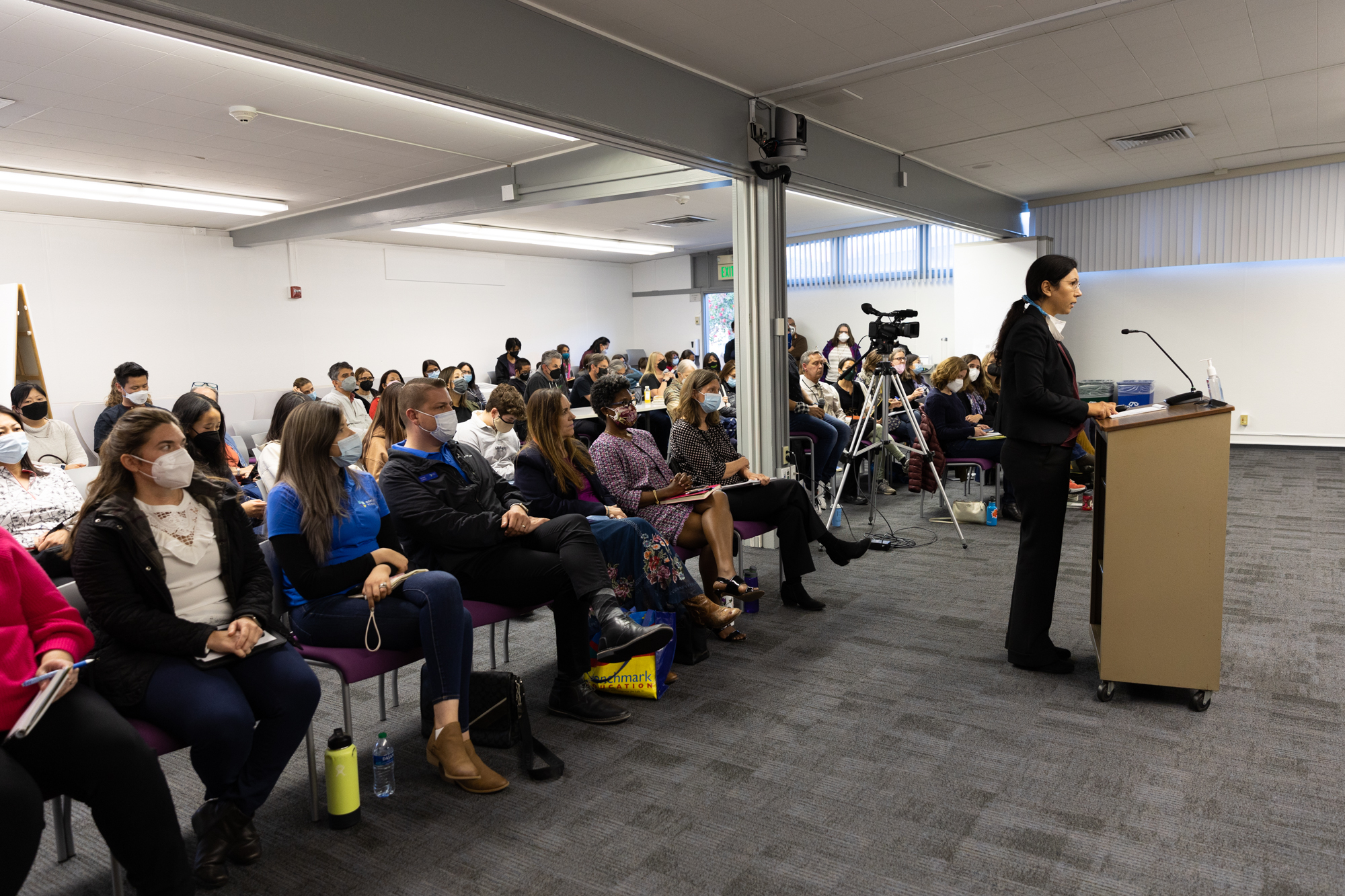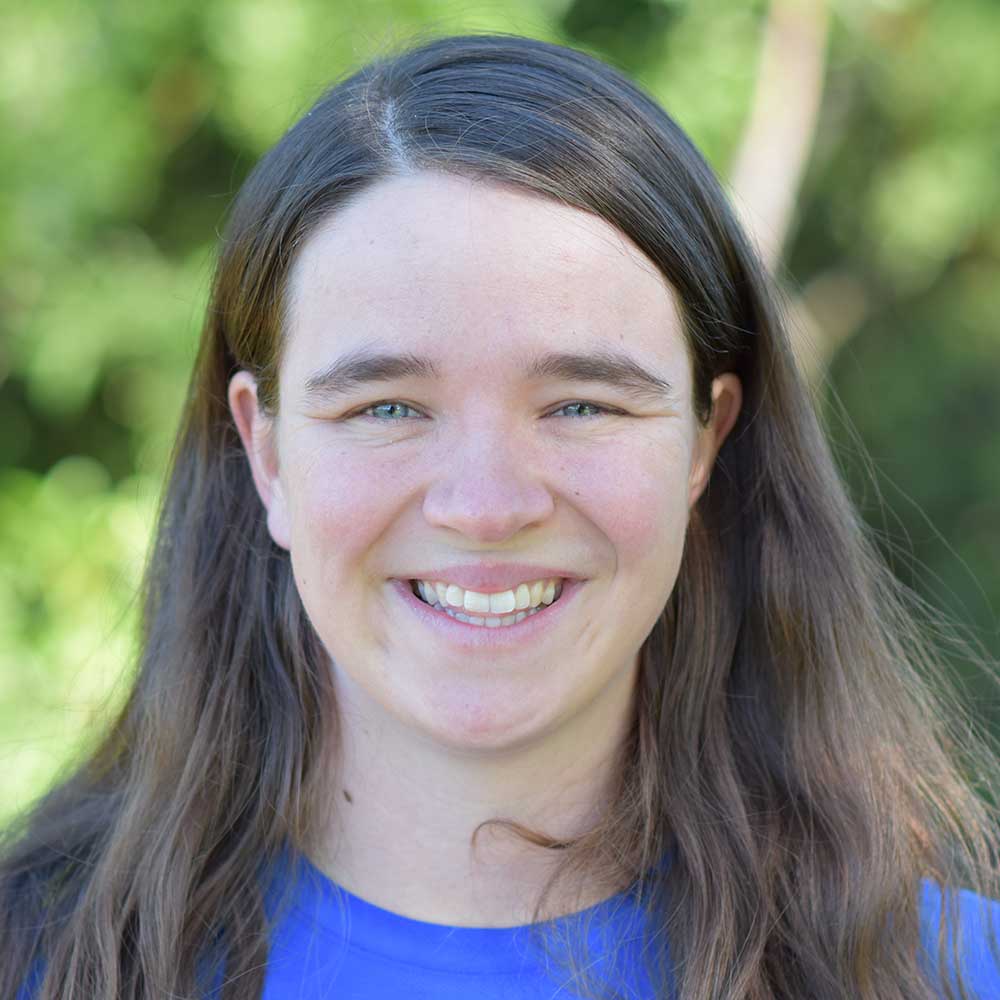The Palo Alto school district is moving ahead with plans to establish formal requirements for its child care providers — including licensing rules, minimum staffing ratios and a required share of spots to be set aside for students receiving financial assistance — after plans to reduce space for two longtime providers drew backlash last spring.
An ad hoc committee tasked with creating the criteria presented their recommendations to the school board at its meeting on Tuesday, Jan. 17. The standards call for the district to work with all three existing providers — Palo Alto Community Child Care (PACCC), Kids Choice and Right at School — to continue serving students in the district. Director of Student Services Herb Espiritu told this news organization that the district wants to allow each of the providers to at least retain their current space allocations next year.
PACCC and Right at School both told the Weekly that they plan to work with the district to meet the requirements. Kids Choice, which operates at Lucille M. Nixon Elementary School, did not respond to an interview request.
The creation of the ad hoc committee came after the district caused controversy last spring with plans to reduce PACCC and Kids Choice's space on campuses in favor of Right at School. Parents charged that the district was favoring a nationwide chain at the expense of local providers without adequately consulting the community, while the district said that its decisions had been based on trying to ensure all students had affordable child care options.
The district ultimately reversed course, mostly maintaining the status quo this school year and setting up an ad hoc committee to make long-term recommendations on what the district's rules should be for its child care providers. The committee met four times last semester and included parents, teachers and administrators.
One of the committee's major recommendations is to require that each provider set aside at least 15% of their seats for kids receiving financial aid.
"Our child care and enrichment programs continue, and will continue, to represent our belief that all students, regardless of their background, should have an opportunity to learn, grow and thrive in our care," Assistant Superintendent Yolanda Conaway told the board. "That's the premise of the work that we are trying to do here."
A large component of these efforts is the Expanded Learning Opportunities Program (ELOP), a state initiative that provides districts with funding to offer free after school care for students in transitional kindergarten through sixth grade.
Palo Alto Unified has identified two categories of students to prioritize serving through ELOP. The first priority group is made up of low-income students, those learning English, foster youth and homeless students. The second group is students who are identified through the district's reading initiative and those in the special education program who could benefit from the free after school services.
This year, Right at School was the sole provider that the district worked with to serve ELOP families, Espiritu told this news organization. Moving forward, the district plans to work with all three providers to serve ELOP students, with the expectation that they set aside at least 15% of their seats for these kids.
Currently, roughly 54% of Right at School's students are receiving financial aid, compared to 9% of PACCC students and none of the students served through Kids Choice, according to numbers presented to the ad hoc committee at an Oct. 18 meeting.
Since PACCC wasn't participating in ELOP this year, the students who were receiving financial aid were getting assistance through state and city programs, as well as PACCC's own scholarship funds, Executive Director Lee Pfab told this news organization. She noted that the numbers presented to the ad hoc committee only represent school age children and don't include the kids that PACCC serves through its infant care, toddler care and preschool programs. Many of the kids at PACCC who were receiving financial aid this year likely also qualify for ELOP, Espiritu noted.
PACCC wants to serve more students whose families struggle to afford child care, Pfab said, and next school year the organization plans to work with the district to meet the 15% benchmark.
"We have been working in this arena since our inception," Pfab said. "It is (about) looking at, how do we realign our efforts and supports to meet the new identified number?"
One challenge is that the district only plans to give the child care providers $2,500 annually for each ELOP student ($5,224 if the student is in transitional kindergarten). That's well below the actual cost of providing care.
According to Espiritu, the state allocates school districts ELOP money based on their number of underserved students. If all of these students in Palo Alto signed up for after school care, the district would only have about $2,000 per student, Espiritu said. If necessary, the district plans to fill in the gap between what it receives from the state and the $2,500 that it will pay providers.
To meet the 15% benchmark of ELOP students next school year, Pfab said her organization is strategizing ways to make up the funding gap, including potentially fundraising.
At their Jan. 17 meeting, school board members expressed concerns about the impact of having a system where one provider, currently Right at School, serves the lion's share of low-income students.
"The system we have now is essentially a segregated system, where almost all of the priority students are with one provider and the other providers serve very few," Todd Collins said.
While requiring providers to serve 15% of ELOP students may help integrate the system, Collins noted that it won't necessarily be enough.
Jesse Ladomirak said that the changes the district had been planning this past spring were aimed at making after school care accessible to all families, but that the communication wasn't effective, leaving families frustrated and confused.
"I think the uncomfortable truth is that this district over the years has facilitated a system — both financially and logistically, by omission and commission, I will say — that is basically off-limits to way too many of our families because they can't afford it," Ladomirak said. "To me, this flies directly in the face of what it means to be a public school district."
This is the fault of past school boards, Ladomirak said, not of PACCC or Kids Choice, who she said are trying to offer a valuable service that is expensive to provide.
One challenge to expanding the child care programs is the requirements placed on the spaces that PACCC and Kids Choice can use. Both organizations have child care licenses that require that they use dedicated spaces, board President Jennifer DiBrienza said. That means they can't occupy classrooms that are in use during the school day.
Right at School, on the other hand, has more flexibility when it comes to space allocations. Rather than relying on a child care license, Right at School operates under what's known as the state's "Heritage School" criteria, Conaway said.
The ad hoc committee recommended accepting programs operating either with a child care license or under the Heritage School criteria. Board members questioned district staff about just what counting as a Heritage School entailed, with Collins pointing out that the criteria seem to have been originally meant for offerings such as weekend language programs.
According to Conaway, the state has opened up opportunities for child care vendors to register under the Heritage School criteria in an attempt to make child care options available for more students.
Under the ad hoc committee's recommendations, the district would conduct unannounced site check-ins to oversee the quality of Heritage Schools that aren't subject to regular state monitoring visits.
The board doesn't plan to take a formal vote on the ad hoc committee's proposed criteria, DiBrienza said, adding that these types of issues are typically handled by staff. The eventual contracts with each provider will be approved by the board, DiBrienza said. Board members have also requested an update either this spring or next fall on the progress that's made in implementing the new criteria.



Comments